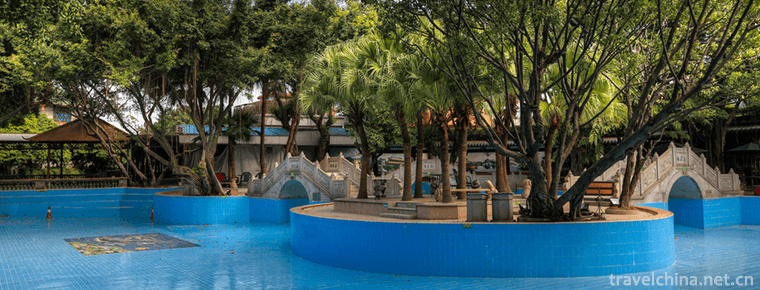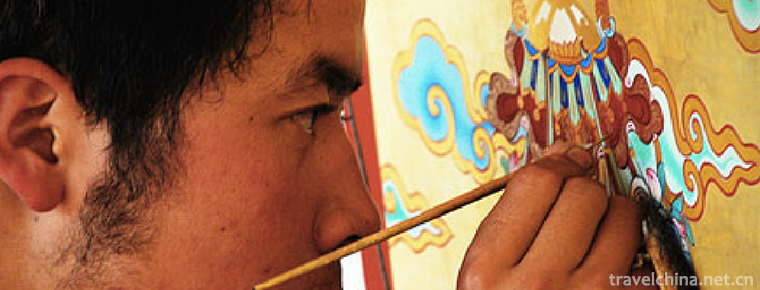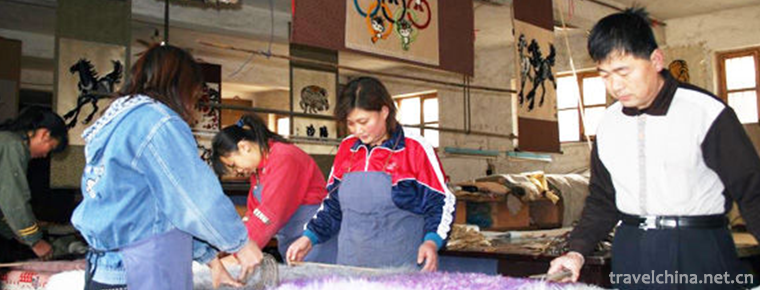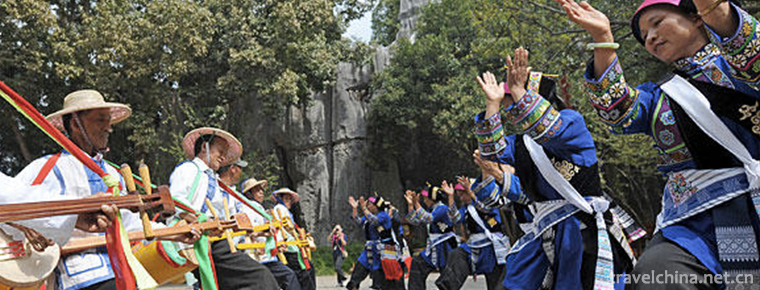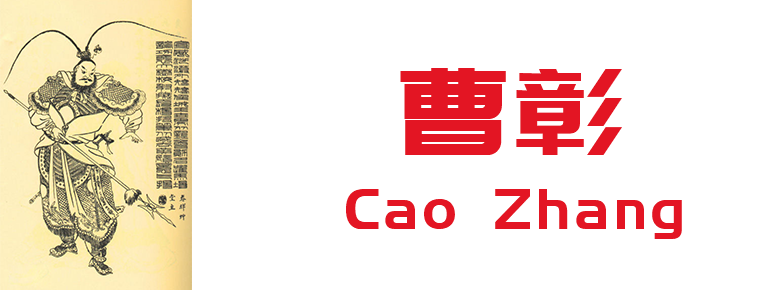Laozi Shandong Province
Laozi Shandong Province
Shandong Laozi is a traditional opera art form which spreads in Shandong Province. It evolved from the ancient "lotus flower falls". Laozi instruments are mainly cymbals (commonly known as Guangguang), bamboo boards and festivals, rather than strings.
On June 7, 2008, "Shandong Laozi" declared by Shandong Shanxian County was listed in the second batch of national intangible cultural heritage list with the approval of the State Council. On December 3, 2014, the "Shandong Laozi" declared by Jinxiang County, Shandong Province, was approved by the State Council to be included in the fourth batch of national intangible cultural heritage expansion projects list .
Heritage serial number: 778 V-85.
Representative Inheritor of National Non-material Cultural Heritage Project: Zhang Qingmin
historical origin
Shandong Laozi is also known as "Lotus Flower" and "Lotus Flower Music", commonly known as "Light Book". It is named for the lining of the original song "Lotus Flower, Lotus Flower". Zhai Hao's Popular Compilation quotes from the Song Dynasty monk Puji's Five Lanterns Club Yuan: "Yu Daopo often attends Langya with the public, and one day he hears people singing lotus falls, enlightenment." It can be seen that in early years this song was a warning song for monks and families. Laozi in Shandong Province had been spread among the local people since the Northern Song Dynasty, and was very popular in Yuan and Ming Dynasties.
Shandong Laozi, also known as "Lotus Flower" and "Lotus Flower Music", is named for its early melodic liner, abbreviated as "Laozi". The song of warning to the world, which was first sung by monks, was popular in Shandong Province in the Song Dynasty. But at present, artists can only trace back to ten generations, about the middle of Qing Dynasty. Laozi, which is popular in Shandong, is called "Laozi in Shandong". Because its main accompaniment instruments are cymbals and bamboo boards, also known as "karaoke book" or "lotus leaf hanging board". Because of the difference of its popular regional dialects and tunes, three kinds of "mouth" have been formed: one is "Nankou", which is popular in central and southern Shandong and southwestern Shandong, and its style is the most rugged. Sixty years ago, he sang an old song with a slow rhythm and a flowery tune. He paid attention to circuitous and tortuous rhythms, with great ups and downs.
artistic characteristics
Music for voices in a Chinese Opera
Shandong Laozi's singing tune is simple, half-talking and half-singing. Generally, the "string of bells" type of stacked sentences are used, which are divided into several paragraphs according to the meaning of the word, more than a dozen sentences, and less than two sentences, namely, pulling a long cavity, playing a simple cymbal point as a way through the door. Most of the lyrics are seven-character or cross sentences with the structure of upper and lower sentences. Because Laozi's singing is too monotonous, the art often absorbs the tunes of the local sister art to enrich its own singing. Laozi's singing has its own characteristics, and his bright and powerful style clearly reflects the forthright and forceful character of the people in Southwest Shandong.
Schools
In the middle of Qing Dynasty, Shandong Laozi was popular in all parts of Shandong Province. Because its accompaniment instrument was a single-page cymbal, also known as "cymbal book", it was divided into three parts according to its different popular regions, languages and singing tunes. "Nankou" is popular in the south of Tai'an and has a great influence, while "Beikou" is popular in Jinan and northwest Shandong, and "Dongkou" is popular in Weixian and Pingdu areas. When singing, one person beats cymbals with his left hand, while the other sings "lotus leaf suspension board" with a big bamboo board, while the other beats cymbals and sings with a bamboo board, which is called "engine board". "Lao Kou" has a slow and tactful voice, and then adapts to the need of storytelling and evolves into a "flat voice" fast mouth. Traditional bibliographies include "Daguanxi", "Black Pine Forest", "Zhou Cang stealing children", "Four Rings", "Xue Li returning home" and so on. The representative figures are Zhang Yuanxiu and Song Dynasty industry.
Inheritance Significance
Shandong Quyi occupies an important position in the development history of Chinese Quyi. The artistic value of Luozi in Shandong can not be ignored. It is an important part of folk music in China, and also a comprehensive art integrating literature, music and performance. It has developed from a form of performance performed by folk artists in order to make a living to a kind of performing art on the stage nowadays. Its subject matter, music structure and performance form are all created and performed by specialists. It is closely combined with folk music and local dialects, and has the characteristics of one person and many angles. For thousands of years, the hard work of the working people has not only created a brilliant material civilization, but also created a culture and art with distinct characteristics. Shandong Quyi occupies an important position in the development history of Chinese Quyi. It is also an extremely important part of Chinese traditional music and one of the most precious cultural heritage of the Chinese nation.
Current situation of inheritance
Famous artists include Liu Benchun, Wang Jinshan, Wang Jiaozheng and Qiao Yushan. Later, Pingkou Laozi rose, paying attention to selling words and singing big books. Famous actors include Li Hejun ("little pepper"), Hou Jiaoshan ("flying sky clicking"), and modern famous artists include Zhang Qingmin , Hou Yongzhi, Zhang Yuanxiu, Gao Qinghai, etc. The second is "Beikou", which is popular in the northwest of Shandong Province north of the Yellow River. Slow mouth, simple style. Famous artists include Cui Yuchen ("Laoyu"), Gou Chunsheng, etc. Around 1920, Gou Chunsheng became famous in Jinan. Later, Wang Chuanduan, Wang Honghai, Fu Daling (female), Wang Mingyai (female) and so on. The third is "Dongkou", which is popular in Weifang and Pingdu area east of Jinan. At the beginning, it is also slow mouth, and then it develops to a level mouth which is better than narration. Famous artists include Ji Baokui and so on.

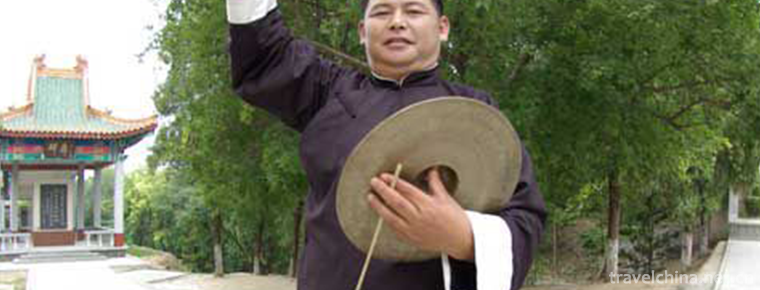
-
Shanghai
People's Republic of China municipality directly under the central government.
Views: 268 Time 2018-10-12 -
Bao Mo yuan
Baomo Garden is located in Zini Village, Shawan Town, Panyu District, Guangzhou City, Guangdong Province. It was built in the late Qing Dynasty and covers an area of five mu.
Views: 156 Time 2019-01-02 -
Tibetan Thangka
Tibetan Thangka, also known as Tangga, is a transliteration of Tibetan language. It is a scroll painting mounted on satin fabrics. It is a kind of painting with Tibetan cultural characteristics.
Views: 164 Time 2019-04-15 -
Jiangxi opera
Gan Opera is a traditional opera which sings high-pitched, random-play, Kun Opera and other tunes in a multi-tone way. The dialect used is Gan dialect. Its origin and predecessor.
Views: 91 Time 2019-04-30 -
Grass grass drums and drums
Grass gongs and drums, also known as grass chants, are commonly known as "hilarious songs". It is a unique form of folk song art. It is a kind of Tujia folk song that the .
Views: 130 Time 2019-05-02 -
Tanning Technology of Tan Sheepskin
Tanning process of Tan sheepskin in Jiaocheng County is relatively complex, totally depending on manual operation. There are more than 20 processes such as washing, soaking, drying, shoveling, nailing.
Views: 261 Time 2019-06-18 -
Trichord Dance of Yi Nationality
Trichord dance of the Yi nationality is a folk dance handed down from generation to generation by the people of the Yi nationality. Different areas or different tribes of the Yi nationality have diffe.
Views: 137 Time 2019-07-12 -
Cao Bin
Cao Bin (931 - 999 years), Zi Guohua, really decides Lingshou (now Hebei). Northern Song Dynasty The founding fathers..
Views: 174 Time 2019-09-15 -
Cao Zhang
Cao Zhang (189 years - 223 August 1st), Zi Zi Wen. Pei Guo Qiao County ( Anhui People in Bozhou. Three countries period the Wei state of the Three-Kingdoms Period Imperial clan, general, Wei Wu Di Cao.
Views: 156 Time 2019-09-15 -
Huangjing Nature Reserve
This entry is lack of overview map, supplement the relevant content to make the entry more complete, but also quickly upgrade, come on!.
Views: 305 Time 2020-10-16 -
Geographical environment of Deyang
Deyang City is located in the northeast edge of Chengdu Plain, with geographical coordinates of 30 ° 31 ′ - 31 ° 42 ′ N and 103 ° 45 ′ - 105 ° 15 ′ E. Deyang borders Fucheng District of Mianyang City in the northeast, Santai County of Mianyang City in the East.
Views: 308 Time 2020-12-14


